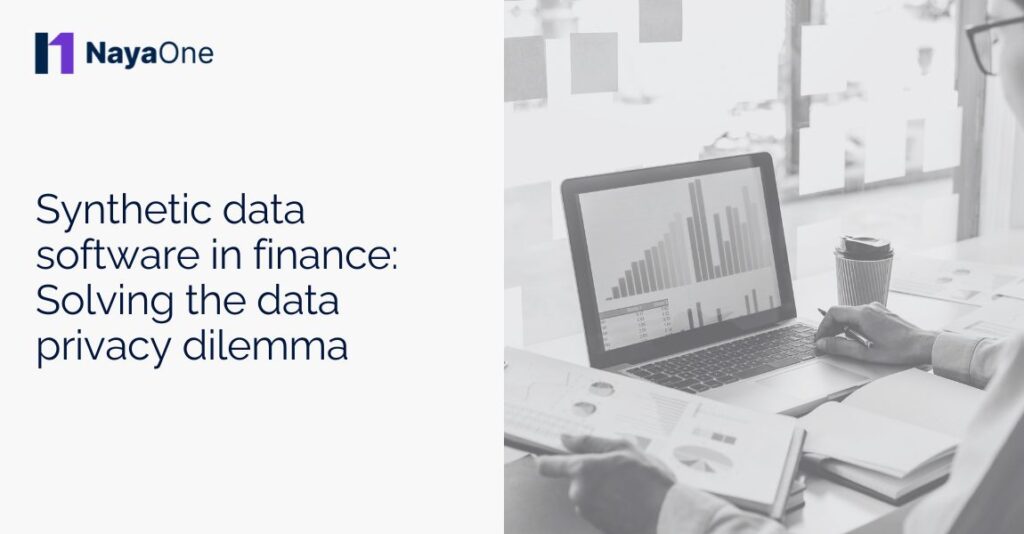Let’s be honest, financial services and data privacy have never had the most relaxed relationship. Between GDPR, PSD2, and a constant stream of audits and policies, banks and fintechs are always walking a tightrope. At the same time, everyone wants to innovate. You want better fraud detection, more accurate risk models, and slick digital experiences. But how do you test and train those tools without tripping over compliance issues?
Enter synthetic data software. It’s popping up everywhere, from innovation labs to sandbox environments, and for good reason. In fact, the global synthetic data generation market, which was valued at roughly $169 million in 2021, is projected to skyrocket to about $3.5 billion by 2031, at a compound annual growth rate of nearly 36%. It gives you realistic, regulation‑friendly datasets without the stress of handling sensitive customer information. In short, it’s helping the finance world move forward without looking over its shoulder.
Let’s dig into what makes synthetic data so clever, how it’s different from anonymised data, and why it might be the solution that finally lets compliance teams and developers sleep at night.
What makes synthetic data different from anonymised data?
First things first, let’s clear up the confusion. You might be thinking, “Isn’t synthetic data just anonymised data with a fancy label?” Not quite.
Anonymised data is real data that’s been stripped of identifiable information. Sounds great in theory, right? The problem is, even anonymised data can be pieced back together, especially when combined with other datasets. That makes regulators a bit twitchy. Plus, it doesn’t solve the problem of data access; getting anonymised data still means waiting for approvals, scrubbing datasets, and sometimes… just giving up altogether.
Now synthetic data, on the other hand, is entirely artificial. It’s generated by models trained on real data, but it doesn’t contain a single actual customer record. It mimics the patterns, structures, and behaviours of the original dataset without exposing any private details. Think of it like a photorealistic painting; it looks just like the real thing, but it’s completely original.
This is what makes data software so powerful in the financial world. It gives teams the freedom to build, test, and explore without ever handling sensitive data. No need for lengthy approval chains or nervous glances from the legal team.
How can synthetic data software support compliance in financial ecosystems?
Let’s face it: compliance is a big deal. Financial institutions are under constant pressure to meet regulatory requirements and prove that customer data is handled properly. The challenge is these same institutions also need access to data if they want to launch new products, test systems, or collaborate with third parties.
That’s where synthetic data software steps in as the unsung hero. Instead of locking down every data request behind a wall of paperwork, banks and fintechs can use synthetic data to simulate real‑world scenarios without risking any actual customer exposure.
This is especially useful in sandbox environments. If you’re running an open banking trial, testing an API, or validating a new regtech solution, synthetic data can act as a stand‑in for live production data. It’s compliant by design, which makes audits less painful and innovation a lot more accessible.
In fact, Gartner predicts that by 2026, approximately 75 % of businesses will be using generative AI to create synthetic customer data, sharply up from less than 5 % in 2023, a clear signal financial firms are increasingly turning to this technology to support compliance and innovation.
Regulators are also starting to see the benefits. Many are recognising that synthetic data, when generated properly, poses far less risk than anonymised alternatives. It doesn’t mean you can throw governance out the window, but it does make life easier for compliance teams, developers, and third‑party partners.
Why is synthetic data ideal for AI and machine learning in finance?
Machine learning and AI models are only as good as the data they’re trained on. That’s a problem when your best data is locked down behind privacy walls, waiting for approvals that could take weeks. You want to move fast, but you don’t want to break anything or anyone’s trust.
That’s exactly why synthetic data software is getting so much attention in finance. It creates datasets that are rich, balanced, and tailored for specific use cases. Need to train a model to detect rare types of fraud? No problem, synthetic data can amplify those edge cases without compromising on quality or compliance.
It’s also great for solving bias and imbalance in datasets. Real-world data can be messy. It often reflects historical biases or gaps that you don’t want baked into your models. With synthetic data, you can design training datasets that are representative, fair, and optimised for performance.
And let’s not forget the cost savings. Cleaning and preparing data is one of the most time-consuming parts of any AI project. Synthetic data is ready to go. That means fewer delays, faster iteration, and more room to experiment.
Whether you’re building a credit scoring tool or a chatbot for financial advice, synthetic data helps get your models into shape without tripping over regulatory wires.
What should financial firms consider when choosing synthetic data software?
Not all data software is created equal. If you’re thinking about bringing it into your workflow, there are a few things you’ll want to keep in mind.
First up: accuracy. The data may be fake, but it still needs to behave like the real thing. A good platform will let you generate datasets that mirror the statistical properties and quirks of your actual data, without overfitting or leaking anything sensitive.
Scalability is another big one. Whether you’re a challenger bank or a major global institution, you need software that can handle the complexity and volume of your operations. Bonus points if it plugs in neatly with your existing systems and data pipelines.
You’ll also want to look at governance. How does the platform document how data is generated? Can you track and audit the process? Does it meet internal standards and external regulatory expectations?
Finally, think about usability. Your data science team shouldn’t need a PhD in theoretical mathematics to use the tool. Look for a solution that supports real-world financial use cases, with user-friendly interfaces and strong support.
A recent McKinsey report found that synthetic data can reduce data preparation time by up to 50 %, a game changer for teams that want to accelerate model development and experimentation in finance.
Is synthetic data the future of privacy-first innovation in finance?
So, where does that leave us? The financial world is under pressure to innovate but also to protect. That tug-of-war isn’t going anywhere. But synthetic data software gives institutions a way to balance both sides.
Platforms like NayaOne help firms bridge the gap between data security and rapid innovation, offering access to synthetic data that’s ready for serious financial testing, without the compliance headaches.
You get realistic data that’s safe to use. You get compliance without compromise. And you get the freedom to build, test, and deploy without waiting on red tape.
Of course, synthetic data won’t solve every challenge on its own. You still need strong governance, clear policies, and a good understanding of when and how to use it. But as privacy expectations continue to grow, and as AI becomes more central to financial services, tools like data software will be key to keeping the momentum going.
It’s not just a workaround; it’s a smarter way forward.





